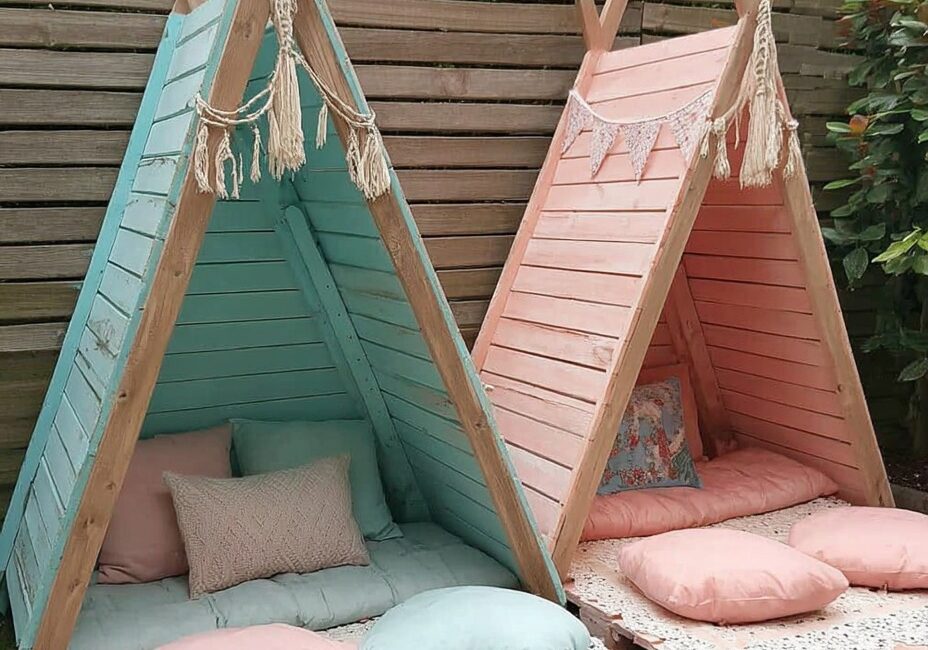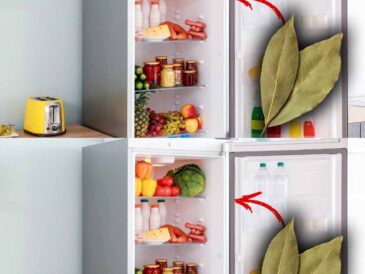- Sanded with 120-grit paper, then two coats of transparent UV- and water-resistant stain.
- A geotextile sheet under a raised deck system on adjustable blocks.
🛏️ Comfort Setup
- High-density foam mattress (20 kg/m³) measuring 120 × 60 cm and 10 cm thick.
- Extra-large round cushions (70 × 70 cm) and sherpa plush throws.
- A 1.2 m diameter shaggy rug for cozy flooring.
🏡 Foundation
- Positioned on a large paved terrace.
- Adjusted leveled blocks for a perfectly flat deck.
- Sealant applied around the perimeter to prevent water penetration.
🎀 Decoration & Ambiance
- A waterproof LED string light (20 bulbs, IP65) plus a remote-controlled LED candle.
- White cotton drapes hung at the entrance on a rod.
- Pastel pennants (pale pink, yellow, sky blue).
- Central macramé installation, hanging baskets, and a chalkboard.
- Mini potted succulents and ferns to bring life to the corner.
Final Touch: This space becomes warm and inviting—perfect for reading, napping, snacking, playing, or creative crafting.
Additional Tips
1. Recommended Materials
- Quality pallets: size 100 × 120 cm, load-bearing, marked “HT” (heat‑treated—not chemically treated).
- Wood types: resinous woods (pine, spruce) or exotic woods (Douglas fir, red cedar).
- Textiles & coverings: outdoor cottons or polyester blends designed for high traffic/weather use.
2. Essential Tools
- Cordless drill-driver with wood and metal bits.
- Jigsaw or circular saw for clean cuts.
- Orbital sander for smooth surfaces.
- Paint brushes and rollers plus protective gear (gloves, goggles, mask).
3. Maintenance for Longevity
- Check fastenings every season.
- Reapply protective finish each spring.
- Inspect the floor and soil, check for leaks or damage.
- During winter, clear textiles inside, ventilate the tipi, and avoid saturating it with rain or snow.
4. Child Safety Measures
- Smooth out or round sharp edges.
- Keep the height under 2 m to minimize fall risk.
- Conduct a load test with 80 kg weight before use.
- Supervise toddlers at all times.
FAQ
Q1. Do I need a building permit for a tipi?
A1. Not generally—a small, removable structure under 20 m² rarely requires one. Check with your local urban planning office if you live in a protected heritage area.
Q2. Can I use chemically treated pallets?
A2. No—avoid pallets treated with naphthalene or toxic fungicides. Look for pallets stamped “HT” (heat-treated), which are safe.
Q3. Is painting a good alternative to staining?
A3. Yes. Use a quality exterior acrylic paint that’s lead-free, UV-resistant, and mold-protective. Sand first for adhesion.
Q4. Is the tipi wind-resistant?
A4. Install anchors—metal stakes, ground screws, or concrete blocks—if wind speeds may exceed ~50 km/h. Adding internal ballast (e.g., sandbags) can also help.
Q5. How do I protect it in winter?
A5. Remove soft furnishings, ventilate the structure, and optionally cover with a waterproof tarp.
Summary & Final Words
By avoiding these five errors—unsafe fixings, inadequate moisture protection, neglecting comfort, poor ground base, and lack of decoration or identity—your pallet tipi will become a charming and lasting feature in your garden.
This step-by-step guide is designed to help you create a magical, cozy, and durable hideaway:
- Strong structure with proper drilling and bracketing
- Quality wood treatment and annual upkeep
- Cushions, rugs, and fabrics tailored for outdoor relaxation
- A stable, well-drained foundation
- Personality-filled décor that encourages creativity and comfort
Bonus Tips for DIY Enthusiasts
- Stencil your own board sign with your family name or a fun quote.
- Add versatile wall hooks for hanging items.
- Explore eco-friendly lighting like solar-powered options.
- Incorporate a small speaker for music or bedtime stories.
- Use a color-themed scheme (e.g., boho pastels or nature tones) tied together through cushions, pennants, and lights.
Conclusion
With thoughtful design and attention to detail—from structural integrity to plush comfort and personal flair—a pallet tipi becomes so much more than its wooden base. It transforms into a charming haven, where stories, laughter, and quiet moments can bloom. Follow these 5 error‑avoidance principles, add your own creative touches, and let this little handmade retreat become a cherished spot for all ages.
Happy building and even happier hours spent inside your very own garden tipi! 😊




